Medication Information: Understanding Labels, Instructions, and Risks
Medication is a form of healthcare that involves the administration of drugs or other pharmaceutical products to treat, prevent, or diagnose various illnesses and diseases. Medication can be defined as a substance taken into the body to help avoid or cure an illness. Medication is an important tool for managing chronic conditions like asthma, diabetes, and hypertension as well as acute illnesses such as the common cold, flu, and infections. In addition to treating illness and disease, medications can be used for symptom relief in order to improve quality of life. With advances in pharmacology, modern medications have become increasingly specialized with fewer side effects than ever before. It’s important to discuss all options with a doctor when considering taking any medication so that the best course of treatment can be identified. Please keep reading for details on the following topics:
How to store medication
Suppositories
Topical medications
Nasal medications
Ear drops
Eye medication
Oral medication
Medication and pregnancy
Over-the-counter medication
Questions to ask regarding medications
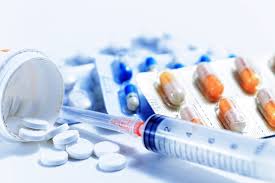
HOW TO STORE MEDICATIONS
Be sure that medications are kept out of reach of any children or anyone who might misuse them
Store medications a dry and cool place
Avoid storing medications in the kitchen or bathroom, which can create heat and humidity, thus decreasing the effectiveness of the medication
Medications needing refrigeration are to be stored in an area in the refrigerator where they will not freeze
Store the medications away from other foods
Keep medications in their original containers
Reasons to Keep Medications in Original Containers
Identification:
- The original container includes the medication name, dosage, and instructions, which help avoid confusion or misuse.
- Prevents mix-ups between medications that may look similar.
Proper Storage:
- The container is designed to protect the medication from light, moisture, and air, preserving its potency.
- Includes child-resistant caps to prevent accidental ingestion by children.
Expiration Date:
- The expiration date is clearly labeled on the original packaging, ensuring you know when the medication is no longer safe to use.
Safety Information:
- The original container includes warnings, potential side effects, and storage instructions.
- Helps avoid interactions with other substances by keeping all relevant details accessible.
Legal and Emergency Use:
- In case of emergencies, medical professionals can quickly identify the medication and provide appropriate treatment.
- Some regulations or institutions require medications to remain in their original packaging for verification purposes.
Best Practices for Storing Medications
Keep Labels Intact:
- Avoid peeling off or damaging the labels, as they contain critical information.
Store Safely:
- Keep medications in a cool, dry place, away from direct sunlight and moisture, unless otherwise specified.
- Avoid storing medications in bathrooms, where humidity can degrade them.
Child Safety:
- Always use child-resistant packaging and store medications out of reach of children.
Travel Considerations:
- When traveling, carry medications in their original containers for customs or medical emergencies.
- Use a labeled pill organizer only for short-term use, ensuring the original container is still accessible for reference.
Proper Disposal:
- If you need to dispose of unused medications, follow local guidelines. Many areas have medication take-back programs.
SUPPOSITORIES
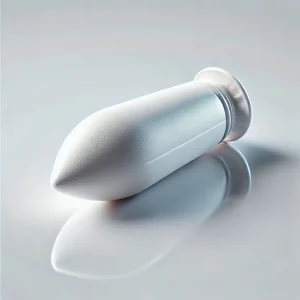
Suppositories are a type of medication delivery system that can be used to deliver drugs and other therapeutic agents directly into the body. Suppositories are semi-solid, round or cone shaped drugs which are inserted into the rectum, vagina or urethra. Unlike oral medications, suppositories do not have to travel through the digestive system and can be absorbed directly into the bloodstream, resulting in fast and effective drug delivery. Suppositories are used for a variety of purposes such as treating constipation, administering pain relief, providing hormone replacement therapy and delivering antibiotics. The pharmaceutical manufacturing process of suppositories involves combining active ingredients with a base composed of medicinal hydrogenated vegetable oils and waxes. Suppository technology has evolved over time, allowing for increased safety, stability and accuracy in drug delivery.
HOW TO INSERT A RECTAL SUPPOSITORY (MEDICATION THROUGH THE RECTUM)

If suppository is too soft to insert, it can be placed in refrigerator briefly or run cold water over it before being removed from the wrapper
Wash and dry the hands thoroughly
Put on clean gloves
Lie on one side with the upper leg bent
Remove the suppository from the wrapper
Lubricate suppository with gel or water
Push suppository into the rectum with one gloved finger approximately two (2) inches
Remove and dispose of the gloves
Wash and dry the hands thoroughly
HOW TO INSERT A VAGINAL SUPPOSITORY (MEDICATION THROUGH THE VAGINA)
Wash and dry the hands thoroughly
Put on clean gloves
Lie on the back with legs bent and knees separated
Using the special applicator supplied with the product, insert the suppository gently into the vagina as far as possible, without using force
Release the suppository by pushing the plunger
Wash applicator with hot, soapy water or throw away if disposable
Remove and dispose of the gloves
Wash and dry the hands thoroughly
TOPICAL MEDICATION
Topical medication is a type of medication that is applied to the surface of the skin or other mucous membranes. It usually consists of one or more active ingredients in a suitable carrier and is intended to be absorbed, enter the bloodstream, and have a therapeutic effect. These medications are used for conditions such as acne, eczema, psoriasis, infections, allergic reactions, warts and herpes. Topical medications can be administered in many forms including creams, ointments, gels and sprays. They generally start to work within minutes of application with effects lasting anywhere from half an hour to several days depending on the indication. Side-effects are rare but can include skin irritation and allergies.
HOW TO APPLY MEDICATIONS ON THE SKIN
Wash and dry the hands thoroughly
Put on clean gloves
Using a gloved hand or tongue blade, apply thin film of cream, ointment or lotion to the affected area
Avoid covering the area with bandages
Replace container top promptly
Remove and dispose of the gloves
Wash and dry the hands thoroughly
NASAL MEDICATION
Nasal medication is a common way to treat a variety of ailments, from allergies and sinus infections to colds and flu. It works by delivering medication directly into the nose, where it can quickly enter the bloodstream and provide relief. Nasal medications may contain steroids, antihistamines, decongestants, antibiotics, or other ingredients depending on the condition being treated. Nasal sprays are easy to use and effective at relieving nasal symptoms like congestion and irritation, while nasal drops or gels can help with more severe or chronic conditions. Regardless of what type of nasal medication is used, it is important for individuals to always follow their doctor’s directions for use in order to ensure safe and effective treatment.
HOW TO ADMINISTER NASAL DROPS (MEDICATION THROUGH THE NOSE)
Wash and dry the hands thoroughly
Put on clean gloves
Blow the nose gently to remove any excess nasal secretions
Tilt the head backwards while standing or sitting up or lie down and hang the head over the side of the bed
Do not let the dropper touch anything
Draw medicine into the dropper
Place the prescribed number of drops into the nostril
Remain in position for a few minutes
Rinse tip of dropper in hot water and dry with a tissue.
Replace the cap immediately
Remove and dispose of the gloves
Wash and dry the hands thoroughly
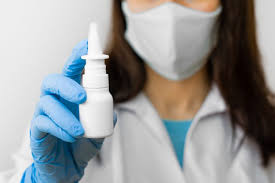
HOW TO ADMINISTER NASAL SPRAYS
Wash and dry the hands thoroughly
Put on clean gloves
Blow the nose gently to remove excess nasal secretions
With the head upright, spray medicine into each nostril
Breathe deeply, while squeezing bottle quickly and firmly
Spray the medication into the nostril as ordered by the doctor
Rinse sprayer in hot water and dry with a tissue
Replace the cap immediately
Wash and dry the hands thoroughly
EAR DROPS
Ear drops are a common remedy used to treat ear infections, inflammation, and other conditions of the ear. They are typically formulated with active ingredients like antibiotics to fight infection and antihistamines to reduce inflammation. Ear drops can also contain other ingredients such as analgesics to reduce pain or antifungals to combat fungal infections. In addition, some ear drops have natural ingredients such as tea tree oil, garlic oil, and coconut oil that work to open up the eustachian tube and promote drainage from the ear. When used correctly, ear drops can reduce symptoms quickly and effectively.
HOW TO ADMINISTER EAR DROPS
Identify the ear to receive the medication
Wash and dry the hands thoroughly
Put on clean gloves
Avoid letting dropper touch anything
Follow directions on label
Draw medicine into dropper
Tilt affected ear up or lay on a side
Pull the ear lobe up and back
Place the prescribed number of drops into the ear without inserting dropper into the ear
Keep the ear tilted back for a few minutes or insert a soft ball of cotton into outer ear to allow the drops to drain into the ear
Remove and dispose of the gloves
Wash and dry the hands thoroughly
EYE MEDICATION
Eye medication is a vital component of eye health and vision care. When it comes to protecting and preserving your eyesight, having the right medication on hand can make all the difference in managing common ailments like dry eyes, infections, glaucoma, and more. Eye medications come in a variety of forms such as gels, ointments, drops, solutions, tablets and creams. Depending on the condition being treated, they may contain steroids or antibiotics to reduce swelling or fight bacteria; anti-inflammatory medicines to reduce redness and irritation; antifungal medicines to fight fungal infections; and lubricants to keep your eyes hydrated. Proper use of eye medications can help lessen the impact of eye diseases or conditions while also helping to maintain healthy vision for years to come.
HOW TO ADMINISTER EYE DROPS
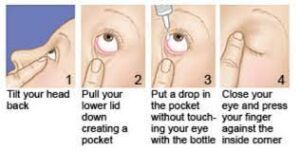
Identify the eye to receive the medication
Wash and dry the hands thoroughly
Put on clean gloves
Clean the eye with a warm moist cloth prior to administering the medication
Hold dropper tip in a downward position
Do not allow the dropper to touch anything, including the eyeball
Shake the bottle if indicated and draw desired amount of medication into dropper
Lay down or tilt the head backwards
Whilst using the index finger of one hand to pull the lower lid in a downward position, support the remaining fingers against the cheek
Use the other hand to place drop the prescribed number drops into the pocket of the lower eye lid
Keep the eyes closed for one to two minutes
If the medication is for glaucoma, press finger against inner corner of the eye and avoid blinking for one minute. This helps block the tear duct and prevents the medication from draining into the nasal passages, allowing it to stay in the eye longer for better absorption
Replace the cap
With the eye closed, use a tissue to gently wipe off the excess medication from the surrounding skin
Use a separate tissue for each eye
Remove and discard the gloves
Wash and dry the hands thoroughly
Two or more eye medications must be administered 15 minutes apart
HOW TO ADMINISTER EYE OINTMENTS
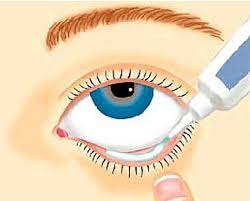
Identify the eye to receive the medication
Wash and dry the hands thoroughly
Put on clean gloves
Clean the eye with a warm moist cloth before applying the medication
Lay down or tilt the head backwards
Remove the cap and keep tip of the applicator from touching anything
Whilst using the index finger of one hand to pull the lower lid in a downward position, support the remaining fingers against the cheek
Use the other hand to apply a small amount of ointment into the pocket of the lower eyelid
Keep the eye(s) closed for one to two minutes
Wipe the tube with a clean tissue
Replace the cap immediately
Remove and dispose of the gloves
Wash and dry the hands thoroughly
ORAL MEDICATION
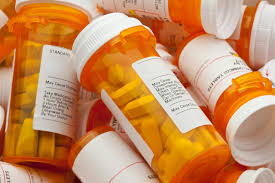
Oral medication is an increasingly popular form of medication delivery. Oral medication can include pills, capsules, tablets, and liquids that are swallowed to deliver the necessary dose of a drug or supplement. Oral medications offer many advantages like improved patient compliance, easier absorption into the body than other methods, convenient dosing schedules, and reduced risk of infection since they are not injected directly into the bloodstream. They also have fewer side effects than injectable medicines since they travel through the digestive system instead of being absorbed directly into the blood stream. Furthermore, oral medications can be used for both acute and chronic illnesses. This makes them ideal for long-term treatment plans because of their effectiveness in managing symptoms over extended periods of time.
HOW TO ADMINISTER MEDICATION THROUGH THE MOUTH
Wash and dry the hands thoroughly
Gather the medications needed
Follow the instructions on the label
Take oral medications with a full (8oz.) glass of water or milk (if recommended)
Place the tablet, capsule or caplet or liquid in the mouth and swallow
Be sure to take each dose whole
Never crush or split a tablet or capsule without a doctor’s order
Do not mix medication into food or drink unless instructed by the physician and unless the individual is aware of the mixture
TERATOGENICITY
Teratogenicity is the capacity of a substance, such as medications known as teratogens, to cause damage to an embryo or fetus. These substances can be naturally occurring or synthetic. In some cases, exposure to these compounds during pregnancy can result in physical deformities and other complications for the developing baby. Safe medications are those that have been approved by the Food and Drug Administration (FDA) and have been proven to have no significant risk of causing birth defects. Unsafe medications are those that have not been approved by the FDA or that do not meet standards of safety or efficacy when taken during pregnancy. These drugs may carry a risk of causing harm to a developing fetus and should be avoided if possible. Pregnant women should always consult with their doctor before taking any new medication to ensure it is safe for them and their baby.
SAFE MEDICATIONS TO TAKE DURING THE PREGNANCY
Acetaminophen (such as paracetamol or Tylenol) for fever and pain
Penicillin and some other antibiotics
HIV medicines
Some allergy medicines, including loratadine and diphenhydramine (such as Benadryl)
Some medicines for high blood pressure (Methyldopa, Hydralazine, Labetalol)
Most asthma medicines
Some medicines for depression
UNSAFE MEDICATIONS TO TAKE DURING THE PREGNANCY
These medications increase the chance of miscarriage, birth defects or other problems
Bismuth subsalicylate (such as Pepto-Bismol)
Avoid medication with Phenylephrine or pseudoephedrine, which are decongestants during the first trimester
Avoid cough and cold medicines that contain guaifenesin during the first trimester
Pain medicines like aspirin and ibuprofen (such as Advil and Motrin) and naproxen (such as Aleve)
The acne medicine isotretinoin (such as Amnesteem and Claravis)
ACE inhibitors, such as benazepril and lisinopril
Some medicines to control seizures, such as valproic acid
Some antibiotics, such as doxycycline and tetracycline
Methotrexate
Warfarin (such as Coumadin)
Lithium
Alprazolam (such as Xanax), diazepam (such as Valium)
Paroxetine (such as Paxil)
PRECAUTIONS WHEN USING OVER THE COUNTER MEDICATION
Carefully read and follow all directions on the medicine bottle and box.
Refrain from taking more than the recommended dose.
Avoid taking any medication which caused a past allergic reaction
If pregnant or breastfeeding seek medical advice before taking any medication besides acetaminophen
Do not give aspirin to anyone younger than age 20 unless the doctor approves.
Seek immediate medical care if:
- Signs of dehydration develop, such as being thirstier than usual or passing less urine.
- Signs of infection develop.
- Symptoms persist or become more severe or frequent.
- Hives, difficulty breathing, swelling to the body develops after taking any medication
Questions to ask about medications:
Reason for prescribing the medication
The way the medication works
Length of time the medication has to be taken
Whether the medication can be taken with food
Foods or beverages to avoid when taking the medication
Whether the medication can be chewed, crushed, dissolved, or mixed with other medicines
Possible side effects to the medicine
The cost of the medication
Any alternatives to the medication
Interactions with other medications
Whether the medication will interfere with work or driving
Disclaimer: The information provided in this content is for general informational purposes only. It is not intended as medical or healthcare advice, diagnosis, or treatment. Always seek the advice of a qualified healthcare professional with any questions you may have regarding a medical condition or healthcare decisions.

